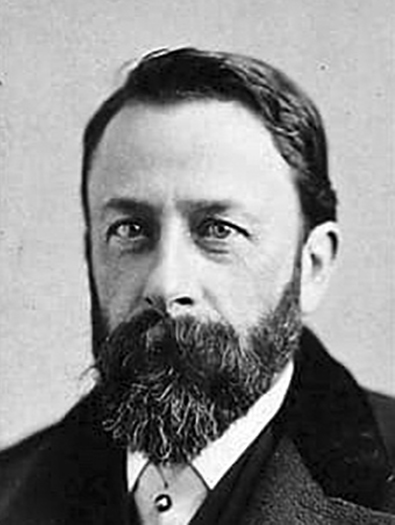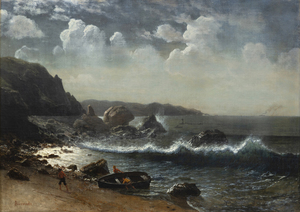ALBERT BIERSTADT (1830-1902)
 Albert Bierstadt was a German born American painter, who returned to his native Dusseldorf in his youth to learn painting. He is best known for his sweeping landscapes of the American West; however, he first began painting in upstate New York with the Hudson River School. The Hudson River School was known for painting romantic landscapes with almost glowing light, called luminism. His work in New York influenced Bierstadt’s later works, which highlight the dramatic way sunlight illuminates the landscape.
Albert Bierstadt was a German born American painter, who returned to his native Dusseldorf in his youth to learn painting. He is best known for his sweeping landscapes of the American West; however, he first began painting in upstate New York with the Hudson River School. The Hudson River School was known for painting romantic landscapes with almost glowing light, called luminism. His work in New York influenced Bierstadt’s later works, which highlight the dramatic way sunlight illuminates the landscape.
Bierstadt made his first trip westward with US government land surveyor, Colonel Frederick Lander. During this trip, Bierstadt sketched and photographed the landscape, people, and creatures he encountered. These sketches formed the basis for his large-scale landscape paintings. Though Bierstadt was not the first to artistically render the western landscape, he became one of the foremost artists of the Rocky Mountain School, and was invited on a number of westward expeditions throughout his career.
Favor of Bierstadt’s artwork declined later in his career, however art critic John Howat has remarked, “the temptation (to criticize him) should be steadfastly resisted. Bierstadt's theatrical art, fervent sociability, international outlook, and unquenchable personal energy reflected the epic expansion in every facet of western civilization during the second half of the nineteenth century” (John K. Howat, American Paradise: The World of the Hudson River School, 284. Metropolitan Museum of Art, New York, 1987). Since the mid-20th century, interest in Bierstadt’s artwork has only increased.

